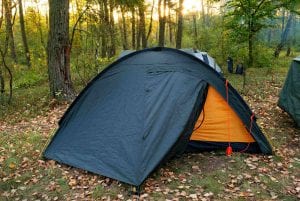If you’ve ever traipsed around in snow or sat for a few hours in a treestand in sub zero temperatures, you’ll probably have experienced the significant discomfort of cold feet.
Not to worry! Those days may behind you! Because if you are looking for tips on how to keep feet warm while hunting this article will sort you right out!
This article deals with four core principles that you can follow to keep your feet warm while hunting which are:
- Keep Your Core Warm: if your blood ain’t warm, your feet certainly won’t be.
- Insulate Your Feet and Legs: same principle as above because if your legs are leaching heat, your feet will not warm up.
- Keep Your Feet Dry: don’t forget your feet can get wet from within (because of sweat) as well as from without, so wick wick wick that sweat.
- Use An External Heat Source: there ain’t no shame using a heat pad.
Keep Your Core Warm to Keep Your Feet Warm
To keep your feet warm, you need to first ensure that the rest of your body is wrapped up when you are not inside your tent. If your core isn’t protected, your extremities will start to feel a shiver, too. This will lead to your feet feeling unprotected from the winter chill.
However, keeping your core warm isn’t just a case of wrapping up in warm winter clothing. It’s also about eating the right food and drinks to retain as much body heat as possible.
Warm clothes
You should ensure that every area of your body is sufficiently wrapped up – including your feet! Starting from the top, you should wear a wool hat and scarf. Naturally, your head is the most exposed part of your body. You feel the cold mostly on your face and lose a significant amount of your body temperature above the shoulders.
In this situation, your body draws blood from elsewhere to keep your head warm. This means that your feet may suffer from reduced blood flow because of this. So, to keep your whole body warm, you need to keep your head warm.
The same goes for all other areas of your body. You need to invest in a thickly-insulated hunting jacket and gloves. We’d also recommend getting a pair of Gore-Tex hunting pants. To stay warm all over, you’ve got to cover all exposed areas of your body.
Food & drink
If you don’t get your hunting diet right, your core will suffer. You need to consume a nutritious meal around three hours before heading out on your hunting trip. Fatty meats and lean proteins are good options. These won’t only keep you warm but also help to sustain your energy. Ideally, your meal should contain meats, beans, nuts, eggs, and cheese.
It’s also vital to steadily snack throughout your hunting trip. For this, we’d recommend lighter and healthier snacking options. This includes trail mix and dried fruits. However, the best thing to snack on to keep warm is bananas. If you sweat throughout your hunting trip, bananas can help to restore your body fluid balance.
Another means of maintaining your fluid levels is to drink plenty of water throughout your trip. In extra cold weather, we’d recommend taking warm water. This can both hydrate and warm your body. You could also fill up a flask with hot chocolate and treat yourself to a sugary boost throughout the day.
Circulation
When it comes to circulation, two things are important: ensuring your footwear promotes it and keeping the core of your body moving.
While it’s vital to wear hunting socks and insulated boots, you need to ensure they’re loose enough to promote healthy circulation. There’s a big difference between your hunting boots fitting snuggly and them fitting tightly. Make sure you can move your feet around in your boots once fastened. At the same time, ensure your boots are tight enough to stay on.
Additionally, you should ensure that your hunting boots leave enough room for your thick hunting socks. If you layer up your feet too tightly, circulation may be hampered.
You can promote healthy blood flow by exercising. Walking is the best form of exercise, as it keeps your core moving and your feet working. Sufficient upper body movement will keep your blood flow steady and your feet warm.
If you’re in a stationary position, we’d recommend taking regular exercise breaks. Wiggling your toes every couple of minutes is a subtle way to keep your feet warm and the blood flowing.
Insulate Your Feet & Lower Legs
Now you’ve got your core body retaining as much heat as possible, it’s time to turn your attention to your feet and lower legs. The best way to prevent cold feet is, of course, to wear appropriate socks and boots. However, there’s more to insulating your lower legs than you’d expect:
Socks
Your socks are arguably the most important part of your winter hunting clothing. Being the first layer of protection around your feet, you need to choose your socks wisely.
The best socks for hunting are made out of merino wool or synthetic material. Wool socks help your feet stay warm as they provide insulation and also draw off dampness. When hunting sock shopping, look out for socks made with a combination of wool and synthetic materials. This combination is breathable and keeps your feet as warm as possible.
You should actively avoid socks made out of cotton. Although a rugged material, cotton socks are unsuitable for wintertime hunting. Cotton socks absorb sweat and dampness instead of wicking it off. This means that the absorbed water is held next to your foot and will cause a chill after a while.
Depending on the temperature and how much interior boot space you have, you could double up and wear two pairs of wool socks. We’d also recommend having a spare pair on you, just in case.
Boots
Providing you with a thick outside layer, insulated hunting boots are the secret to warm feet. Ideally, your hunting boots should boast around 400 grams of insulation. This will provide you with more than enough resistance to freezing temperatures. Plus, if they’re 100% waterproof boots, there’s no chance of cold rain cutting your hunting trip short.
The more insulation you have, the better. Especially if your hunting trip involves a lot of standing still in a tree stand. If you do a lot of walking while hunting, a lightweight boot would be more beneficial than a heavily insulated boot.
Besides insulation, you also need to consider the sole thickness. A thick sole is obviously preferred as it provides you with a barrier between your foot and the cold ground. You definitely need a thick-soled shoe if you often hunt in snowy conditions.
In terms of materials, the best winter hunting boots are made out of leather and rubber. Rubber is particularly good because it traps warmth. Besides the layer of insulation, most winter hunting boots come with a layer of wool on the inside. This provides your lower legs with extra warmth and helps to keep your feet dry.
One thing you should avoid in cold weather is steel-toed shoes. If you wear steel-toed shoes, the front of your shoe will get cold and stay cold. The steel grows gradually colder, rendering your wool socks and insulation ineffective.
Gaiters
Although not essential, gaiters provide extra protection for your lower legs and feet. If weather conditions are particularly unpredictable, we’d recommend investing in gaiters to protect yourself from heavy rain showers and snow.
Gaiters are effectively fabric guards that you can attach to the exterior of your hunting boot. They shield your lower leg from all exterior substances, including debris and rainwater. When wearing gaiters, no moisture can find its way into the interior of your hunting boot.
Insulation between feet and lower ground
When standing stationary, there are ways to barricade the bottom of your feet from the icy cold ground. One of the best forms of exterior insulation is an insulated mat. Most good hunting stores will be able to sell you a cell foam matt with a synthetic material exterior. When placed on the ground, it does not allow cold temperatures to rise above it.
Alternatively, there are several rubber mats available on the market, too. Like rubber boots, rubber mats work to retain heat in extreme temperatures. Investing in a rubber mat that fits the size of your tree stand would be a good way to kit it out and ensure it provides maximum warmth.
If you don’t want to invest in a foam or rubber mat, you could simply take a bit of cardboard or carpet and stand on top of that. While cardboard won’t provide the same results as rubber, it’ll still help to keep your feet warm.
Keep Your Feet Dry (Critical for Keeping Your Feet Warm While Hunting)
No matter how premium your hunting boots are, you may experience dampness getting in your shoe. While waterproof boots will work to reduce the amount of external water getting in, sweating can sometimes be unavoidable.
Surprisingly, foot sweat is one of the main causes of getting cold toes while hunting. Your feet have more sweat glands than any other area of your body (per inch) and are, therefore, prone to sweat through movement. Wool socks will reduce the amount of sweat build-up in your shoe, but sometimes they need extra help.
Foot powder
Foot powder works the same way as talcum powder in that it dries up your sweat. For best results, purchase foot powder that contains baking soda, arrowroot, zinc oxide, or kaolin clay. Additionally, we’d recommend looking for odorless powder. Like all things hunting, you don’t want to attract attention to yourself, and odorless powder ensures this.
To use foot powder, all you’ve got to do is tap some into your shoe before putting it on. You could even pour some in your hand and rub it over your sock. This, along with your wool socks, should help you remove the threat of sweat build-up completely.
If you can’t find foot powder, baking soda can be used as an alternative.
Cotton wool balls
If you’re looking for an even cheaper method of keeping your feet warm and dry, you could use cotton balls. This common household item can be placed between your toes. Not only does placing cotton balls here help keep your feet warm, but they also work to soak up any sweat moisture you create while hunting.
For best results, put the cotton balls in your socks before your feet. Once you’ve filled the bottom of the sock, you should be able to comfortably slip your feet in.
The drawback of using cotton balls is that they may only work for a limited time. Once they’ve absorbed all the sweat they can, they’ll be ineffective. So, on extra-long hunting trips, you may need plenty of backup cotton balls.
Waterproof socks
As we’ve already mentioned, wool socks would be your best option when it comes to winter weather hunting socks. However, you can go a step further by investing in socks that provide real waterproofing. Although they cost more, brands like Sealskinz create socks that do not allow for water to soak through.
These socks are sometimes made of wool and come with several additional waterproofing layers. Typically, these socks feature an outer knit layer, an inner waterproof membrane, and a knit interior.
However, like all things in hunting, it’s worth packing spare socks in addition to your waterproof pair. The outer knit layer of Sealskinz has been known to soak up and hold water, creating a cold sensation for your feet.
Heated Footwear & Heat Packs
Although foot powder helps to keep the interior of your shoe dry, it doesn’t exactly add or retain any heat itself. If you feel that your hunting boots are lacking on the heating front, then there are a number of tricks you could try. This includes investing in heating socks, insoles, boot liners, and packs.
Heated socks
Heated socks – also known as electric socks – are normally powered by heating wires that are hidden within the fabric of the socks. They feel like regular thermal socks. That is until you wear them in extra cold weather and you start to feel their magic. Once the heating wires activate, your toes will feel warm, and you won’t experience any numbness while out hunting.
Some more sophisticated electric socks come battery-powered, meaning they need to be recharged. As long as you remember to charge your heating socks before heading out, this shouldn’t be a problem. A benefit of the more advanced heated socks is that some of them can be remote-controlled. This means you can comfortably switch them on and off as required.
Heated insoles
Most heated insoles are battery charged. However, some recent models are also suitable for USB charging. They tend to be made from EVA stretch material and can fit comfortably over the sole of your shoe interior. With the remote control provided, you can turn up the heat on these insoles to whichever temperature you require. Some insoles exceed a heat of 120°F!
Heated boots
To save money on boot liners and heated insoles, you can reduce the risk of suffering from cold feet by buying heated boots. Alpina boots, for example, tend to come with their own battery-powered heating system.
Boot liners
If your hunting shoes struggle with heat retention, you could try sliding boot liners down the sides. Boot or sock liners basically add an extra layer to the interior of your footwear. To avoid getting cold feet ever again, we’d recommend getting fleece boot liners. Fleece retains body heat well and creates a cozy feeling inside your shoe.
Alternatively, you could purchase insulated boot covers. These zip up on the outside of your boots and help keep your feet warm on the inside. Although not great for hiking in, they’re a good accessory to have when tree-stand hunting.
Heat packs
There are several types of heat packs you can buy for your hunting boots. Most commonly, heat packs come with sodium acetate. You normally have to snap these in the middle (or shake them) and then place them in your boot to feel any effect. Although the created effect may only be short-term, it still provides some heat energy when your feet need it most.
More advanced electric heat packs/hand warmers are also available. These work well at heating your hands, but can also be slipped into your shoes when deer hunting in cold weather.
FAQs
Can you use a plastic bag to keep your feet warm while hunting?
When exploring the wild, many people place plastic bags over their shoes to block out some of the elements. Using a plastic bag does prevent the force of the wind and stops the coldness of the ground from affecting your soles. However, a plastic bag is not as effective at keeping feet warm as a sock liner, an insulated boot pad, or a thick merino wool sock.
How long do the batteries last on heated socks?
On average, batteries last for 4 hours on heated socks. Although this may be a short period compared to the overall length of your hunting trip, it provides you with enough heat to keep your toes warm. Plus, most modern heated socks can easily be charged on the go.






